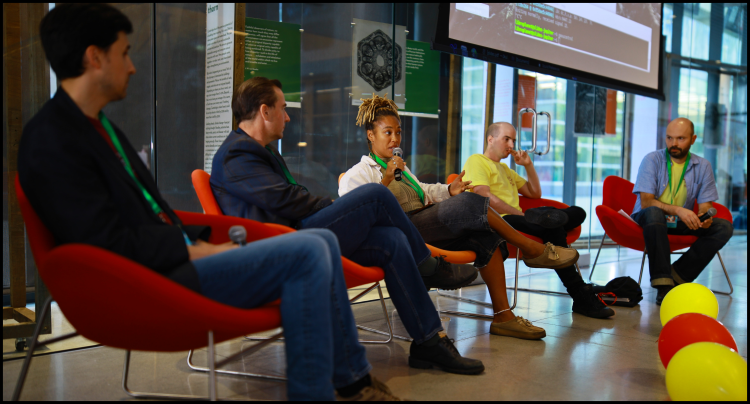Panel opening statement for the FSF40 Celebration
I was honored to be invited as a panelist at the FSF 40-year celebration event in Boston this weekend. Along with Paige Collings, senior speech and privacy activist from the EFF, Devin Ulibarri, the executive director of Sugar Labs, and Greg Farough, the FSF’s campaigns manager, we spent an hour discussing issues around software freedom and privacy, and answered a variety of interesting questions from the audience.

Once they post video and transcription, I will reproduce it here, but until then I’ll convey my notes in response to the opening question:
How has the freedom of users of mobile phones changed since the beginning of the F-Droid, in 2010?
In 2010, there were about 25 million active Android devices around the world. In 2025, it has grown to over 3 billion. Given that Android is built on free software — insofar as it runs atop the GPL-licensed Linux kernel — this can be viewed as a phenomenal expansion of free software adoption. The fact that nearly half of humanity is walking around today with a free-software-powered smartphone in their pocket is a testament to the power of the ideas that started right here, 40 years ago, with the Free Software Foundation.
Also since 2010, the F-Droid Project has grown from a small personal hobby project with a handful of apps, into a repository of thousands of free and open-source applications. F-Droid and the App Fair are the app stores you can trust, because all the apps are reviewed to keep out closed and proprietary software dependencies and flag any marginal “anti-features”, so the user is always in control of the software they are running on their device. It is truly the free software Garden of Eden.
And with free software applications running on top of a free kernel, what’s not to love about the current state of the world? We live in a magical time, right?
So also since 2010, the mobile phone ecosystem has contracted from a slew of competing systems — Blackberry, Symbian, Palm OS, Firefox OS, Ubuntu Touch, etc. — down to just two: Android and iPhone, with Android currently holding around 70% global market share. And with the entrenchment of this global smartphone duopoly has arisen increasingly extractive behavior from the corporations that control their ecosystems.
This year, 2025, has been especially dark. In March, the “Android Open Source Project” closed off its development from the public, switching to delayed and periodic snapshot source releases. This has been very difficult for projects like GrapheneOS which are based on AOSP.
And last month, the other shoe dropped: Google announced that starting next year, they would be blocking all app installations on Android certified devices from any developer who has not registered with the Google Developer Program, which requires the scanning of government identity documents, the payment of a fee, and the agreement to Google’s non-negotiable and ever-changing terms and conditions. Developers of Android apps around the world — regardless of whether they distribute through F-Droid, some other commercial app store, or simply by uploading an apk to their web site — will be cut off from their users forever unless they comply. If this goes into effect, it is an extinction event for F-Droid.
And so to answer the original question, “how has the freedom of users of mobile phones changed since in 2010”, I’ll summarize by saying: it went up, and then it went down. And that’s where we are today.